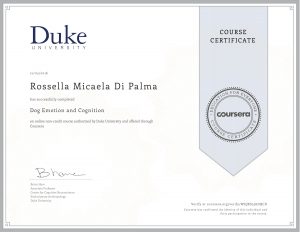Taglia: temperatura e movimento
Oggi ho ripreso in mano uno dei libri di Mario Canton Compendio di Terminologia per la Descrizione della Variabilità Esteriore nei Cani e nelle Razze Canine: Volume 1 e ho trovato un paio di informazioni che credo possano interessare anche i lettori di Dogs & Country.
Il rapporto tra la superficie e la temperatura
La prima riguarda il “rapporto massa/superficie”: la dispersione del calore in un cane è proporzionale alla sua superficie che, tuttavia, non è correlata direttamente con il peso corporeo MA aumenta in rapporto di circa 2/3 rispetto al peso. In parole povere, in proporzione, i cani piccoli disperdono più facilmente rispetto al peso e quindi tenderanno a soffrire il freddo mentre, con i cani grandi, abbiamo il problema opposto. Venendo ai cani da caccia questo potrebbe spiegare perché alcune razze, come ad esempio lo spinone italiano o certi grandi esemplari di drahthaar e setter gordon abbiano maggiori difficoltà quando le temperature si alzano… e l’acqua scarseggia. Parallelamente, mi vengono in mente alcune variazioni di taglia all’interno della stessa razza a seconda della nazione in cui i cani sono allevati. [esiste anche una regola ecogeografica che conferma ciò e che riguarda la fauna selvatica, si chiama Regola di Bergmann]. Parlando di dispersione del calore, inoltre, dobbiamo ricordare che alcune caratteristiche anatomiche la incentivano: muso lungo, orecchie grandi, torace appiattito, profondo o disceso, arti sottili ma con piedi grandi (i cani “sudano” dai piedi), pelo raso e taglia tendente a piccolo. In pratica… vi ho appena descritto un cirneco! Le strutture utili a mantenere calore sono opposte, pensate alla morfologia di un Alaskan malamute o di un samoiedo.
Il rapporto tra la taglia e il movimento
Semplificando di molto le cose (gli interessati possono approfondire consultando i testi di Mario Canton sul movimento), una diminuzione di peso (anche nello stesso soggetto se lo facciamo dimagrire!) regala:
una maggior agilità nella deviazione delle traiettorie poiché ci sono 1) meno peso relativo da spostare e maggior chiusura delle angolazioni angolare (c’è meno peso su di loro);
e un’accelerata esecuzione dei singoli movimenti legata a 1) una diminuzione della massa degli arti e a 2) una loro ridotta estensione lineare.
Il che spiega come mai quando si ricerca la velocità in certi tipi di selezione la taglia dei cani selezionati per quello scopo tenda a ridursi, aggiungo io…
Per chi fosse interessato il libro è disponibile come ebook a prezzo ridotto o nella versione in
cofanetto.
Ps. Visto che la relazione tra superficie e temperatura può influenzare i livelli di benessere del cane, non dimenticatevi di dare un’occhiata al Gundog Research Project!
